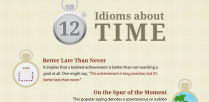Have you ever received a written assignment and were disappointed to see points deducted for grammar mistakes? Unfortunately, grammar can be tricky and it is important to recognize common errors. Look at a few below.
1. Its vs. It’s
The apostrophe placement between these two words can be confusing. It’s has an apostrophe because it is a short form of “it is”. Its indicates that something belongs to something that is not masculine or feminine; such as his or hers. The correct way to use these words are:
“It’s raining outside.” (=It is raining outside.)
“The dog chewed on its bone.”
 2. Fewer vs. Less
2. Fewer vs. Less
Are there fewer or less books to read? Knowing the differences between these words is essential. Fewer refers to items that cannot be individually counted. Less is associated with a commodity or raw material, like water or sand, that can’t be counted.
“Right now, there are fewer bagels.”
“There is less water in the pool.”
3. Who vs. Whom
Who/whom should I invite to the party? To clarify this, you must understand the difference between the two. Who refers to the subject while whom refers to the object of a sentence. You can refer to them like she and her when answering questions.
“Whom should I invite to the party? Invite her.”
In this instance, whom is the appropriate word to use.
“Who was not invited to the party? She was the only person who was not invited to the party.”
In this case, who is the appropriate word to use.
4. Referring to an Entity or Brand As They
Commonly, students make the mistake of referring to an entity or brand as a plural noun. This makes the use of ‘they’ inappropriate. To correct this grammatically, you are supposed to use its.
“To be ready for its promotional release, GameStop planned months ahead of time.”
5. Apostrophe Replacement for Possessive Nouns
It’s already a little confusing to figure out where apostrophes are placed, but it gets even more sticky when looking at possessive nouns. For example, if the possessive noun is plural, the apostrophe needs to go at the end of the word:
“Check the cars’ engines.”
The apostrophe will also go at the end of the word if it is a singular noun that ends with an s:
“The class’ door was broken.”
If the noun is singular but doesn’t have an s at the end, the apostrophe will go before the s:
“The restaurant’s menu had a lot of dishes.”
Grammar is difficult to master and this is proven through the mistakes students commit when writing. However, take precautions in your grammar writing to make sure it is impeccable or not full of mistakes. Continue to do your research to avoid other mistakes not listed in this article!
If you have any doubts, better hire an expert from a writing service like https://domycasestudy.com/ and ask them to proofread your paper and correct the mistakes.






